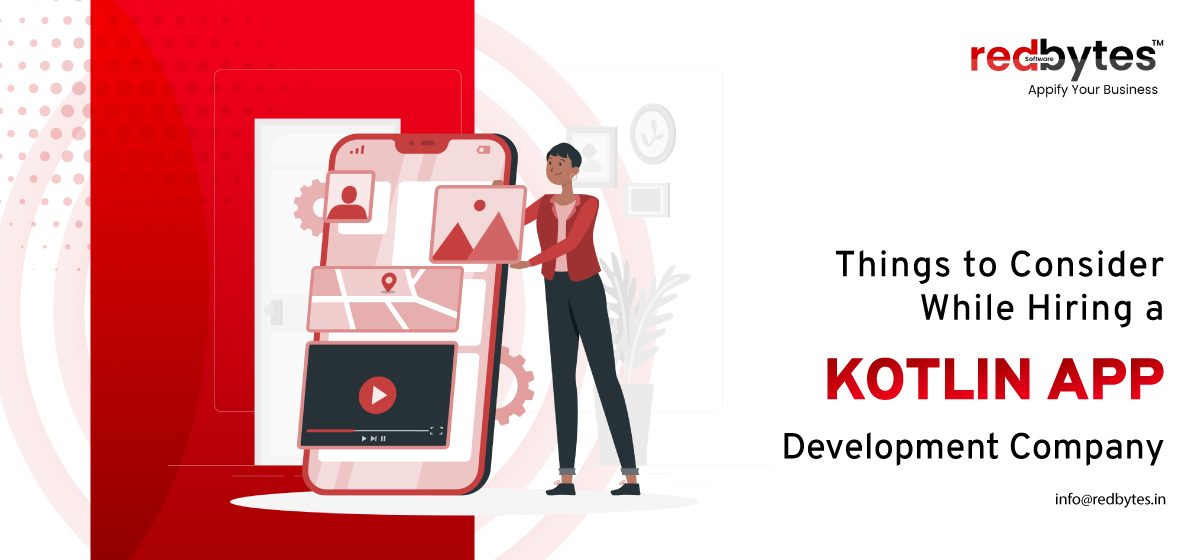Mobile apps are dominating app store Optimization with the volume of as much as over 4M apps. With these many number of apps ruling the app stores, one must think how fierce the competition must be. This scenario suggests that there is a huge challenge for both developers and marketers to survive the crowd and enhance their apps’ overall visibility. To overcome the challenges, it is therefore important to optimize your app to rank top in any app store.

Believing that the mobile app development itself means your app will be downloaded rapidly by millions of interested users is a mistake. After developing the app, another journey of making your app quite visible begins. There are certain steps and benchmarks in the area of app store optimization (aka ASO) that ensure it performs exceedingly best in the saturated app market. Here are 10 important Do’s and Don’ts for effective ASO:
10 Important Do’s
1.Title:
- Title is the first priority in app store optimization strategy. Make your approach creative while you decide to keep a unique app title. You have built a brilliant app and you don’t want to ruin your hard work just by being shallow about the title.
- Usually, the app should be named in such a way that it represents both the content of the app and its purpose. Make it look uncommon, specific and appealing. Emphasize on the relevance of the name or it may confuse app store algorithm and users.
- Try to limit the title to as long as 25 characters for Google play store and 40 for iOS as it works optimally. You can include keywords in the title to help its ranking, but only if suits and looks organic.
- Some unprecedented titles like Facebook, Google, Twitter, Temple Run, Landlord, Candy Crush are eminent examples of the most successful mobile apps.
2.Keywords :
Mobile app development specialists cannot alone shoulder the success of your app. Keywords are also the decider of how your app ranks and what position it will end up with. Just like SEO, mobile app requires keywords that are highly researched and preferred by app users. Therefore, it necessary to conduct a thorough research to identify the list of most preferred keywords for your app context.
3.App Description:
Be careful as you utter or think anything about describing your mobile app. People are not naturally fond of reading app description, so you may not grab much attention through it. But still, it is a vital post mobile app development step. Here is what you need to consider:
- App store ranking algorithms process and churn all the keywords used in app description, which means including primary keywords will help achieve the target. With that being said, you must not overstuff the description with too many of them.
- Make the first lines of the description attractive, catchy and rich since app store visitors are going to determine the quality of your apps just from those few words. Compose the most compelling description that defines your app most and interests many users.
- Explain in brief all the functionality and purpose of the app and how it will add value to users’ life. Make it persuasive and convincing enough through the details of its benefits and features.
- You can also increase the credibility of your app by writing about the recognition of your app or previous app success. A little bit of bragging can be done in this description with sensible freedom. It will boost the download numbers in a way.
4.App Icon:
Well-designed, bold and unique app icon does the job of a vibrant painting and impels viewers to take more interest. Make it original, simple yet eye-catching while avoiding the scope of unwanted clutter. By inserting the purpose of the app in its icon, you can make it speak for itself. The popularity of any app icon can be measured through A/B testing. Experiment with a few of them and see which one goes well.
5.Screenshots magic :
Screenshot can work miracle for your app and it serves as a visual guide to its essential internal features that you think will make difference to its users. Introduce the audience to its inner architecture and tease them with its unique traits.

Screenshots have magical qualities and are as important as mobile app development strategy. It is especially for those who are not much of a reader and like to judge mobile apps through app store screenshots. Make sure you integrate the following points in your screenshots:
- The screenshots that people can view on their screen in first shot without swiping are the ones that have power to grab most of their attention. So make sure they look impressive, expressive and influential. It must be good enough to supply the users a great hint of what your app actually is all about
- Your app screen shots should be optimized to tablet viewing if your app also targets tablet users.
- Publish as many shots as the store allows, and try to emphasize on using default orientation for the screen shot – which is Portrait
- If possible, have an approach of showing at least one feature with each screen shot.
6.Video :
Like screenshots, make a video that gives a vivid illustration of what your mobile app can do. Make a preview video highlighting all the remarkable hallmarks of your app, its amazing key features and its ultimate benefits. Add video somewhere near app description and screenshots. The video is more effective than words. It will help to a great extent in case the app your have published contains several complicated features. Make is as long as maximum 90 seconds which appears optimal.
7.Reviews and Rating :
And how about gaining more leverage from Reviews and ratings? Even A/B testing practiced during mobile app development is a part of review system where certain feedbacks are implemented to make the app still better.
Reviews and ratings are a part of social activities which drive app store ranking algorithm. This means reviews play no less than a hero for app store optimization. It also suggests that your app is alive and seen by users and is not latent.
8.Recognize your Target audience and Competitors :
There could be almost no mobile app development strategy without a well-meditated ASO strategy, and there is no app optimization if you fail to incorporate your target audience and competitors in your strategy.
You can start by asking a few important questions like:
- What does your app do for its users? What goal you want to touch with the mobile app?
- How does it drive your next mobile app marketing plan?
- How will the audience understand and perceive the app?
- Can language be the barrier/saviour for the target audience?
- Why should they download and fall for only your app among many?
- How are your competitors doing in the similar market?
- Does your app offer a fruitful competitive advantage?
Before you start on your ASO strategy, you must take a walk in users’ shoes and think from their perspective. Make your deep research to find out the facts about consumers and know about their trendy approach for mobile apps. Sneak in the land of your competitors and scoop up something viable. Discover those precious keywords that can pull in plethora of traffic. Study some of the effective moves of your competitors and how their reviews, social media exposure and other vitals work for them.
9.Localize Your App :
Localization is important for mobile app development and marketing plan. While developing an app, developers and strategist think of mobile apps in global perspective. However, when you look around you will realize the world is not populated with English speakers. You will have a great chance of increasing downloads by considerable extent by localizing your mobile app.

When you analyze your target audience, you will have a brighter picture of their language, cultures and general interests. You can focus your ASO on each discovery about your target audience – especially their language.
Perceive localizing the app as a tool to gain more responses and downloads. Communicate all features and your brand in the language they love.
10.Frequent Updates :
The mindsets of mobile users tend to evolve rapidly, which requires your mobile app to present them with charming updates added frequently. Constant improvements made considering customer feedback in the app are highly embraced by customers.
Not only that, but apps that are regularly updated by mobile app development veterans are given more preference and value by app store and users, resulting in better reviews and much positive response as each version is launched. Remember the following strategic points:
- Lure your customers towards a note or an update link at login area with a prominent message urging them to download new updates. Push notification also works intrusively within an app telling them about fresh, exciting improvements
- Try to preserve all the positive reviews and ratings of the latest version, especially those highlighted as five stars. Customers often select the app with good ratings.
- Alternatively, you can also update the description field in app store and outline new bits with a noticeable call-to-action.
- Make sure the normal average app update frequency is 30-50 days which is a general preference of top highly popular mobile apps.
10 important Don’ts
1.Doing mistakes in visual elements
Thousands of apps are released and published every year, but not every app ends up in users’ screen or stays there for a long while. Even the exemplary mobile app development methods can’t save the app that is built from shallow angles. This is why certain mistakes should be completely avoided or they will eventually drown your app in the app store. Some of them are:
Name:
Using clichéd, overused app words will not make your app much visible to searchers. Hence, avoid keeping frequently used names/words for your app.
Description:
Don’t make it overwhelming to read the app description. Nor make it too long, tedious and unnecessarily florid. Instead, stick to the main points: purpose, interesting elements, core features, unique approach and its benefits.
Icon design:
Icon can either make or break the app game. So don’t overdo it or make it complex. Users do not appreciate the idea of downloading apps with obscure or illegible icon designs. Even too much of bright, distasteful colours or ridiculous shapes can spoil the hard work done by mobile app development gems.
2.Imitating your Competitors blindly
You can’t really turn the blind eye to the fact that more original your app looks, greater the chance you have of making it to top ranked position. So don’t just blindly follow all the tricks and implementations done by your competitors. In order to stand out and get good reviews from customers, it is important to be different. Choose slightly differing keywords compared to what others have tried.
3.Believing that localization means language translation
A big no to this thinking, because localizing your app does not clearly mean merely translating your app content into local language. It is deeper than that, and more thoughtful. When you localize your app, you convert all the assets and architecture of your app into the form that is most acceptable in specific locality. By localization, you adapt all the app essentials – date formats, time zone, currency, calendar, and other systems – to match the specific country code. This implies that language translation is just a small part of mobile app localization process.
4.Fostering Misconception that: ASP = SEO
Over years, due to similar looking common word (Optimization) present in both practices, people who are not much familiar with App Store Optimization often confuse it with SEO. Despite having slight similarity, ASO is still not SEO. Even many mobile app development companies cannot tell it apart if asked.
SEO strategy helps improve visibility of websites in Google search results by optimizing content. ASO, on the other hand, is actually the process of optimize a mobile app for store-listing to increase its inside-the-app store discoverability. ASO is done also to enhance the conversion rate of an app and boosts the number of downloads.
Some parts of SEO can be used for listing the apps and optimizing its supporting content. But still ASO does not mean SEO. Paid campaigns often work in ASO unlike what is experienced in SEO.
5.Ignoring the frequent changes in app store algorithm
This mistake is as common as confusion between ASO and SEO. Both Google Playstore and Apple App Store are updated time to time and adopt new functioning standards of app store algorithm.
One way to stay informed of these changes is to keep in touch with the community of professionals who have expert knowledge of ASO and app store algorithm changes.
When Apple altered its algorithm last year and reduced the app name characters to 50, the rankings of many apps got affected.
Being unaware of app store algorithm changes means you won’t be able to refresh your own ASO strategy to meet the fresh requirements of updated algorithm. This will not help you while beating the competitors in the market.
6.Incomplete knowledge of effective ASO tools
Without tracking the performance and the effect of your strategic actions, how can you measure the success? That is why you need right ASO tools for thorough measurement of ASO effect.
It is been a while since there are several ASO tools that can help track and monitor several aspects of your mobile app’s performance such as its visibility, keywords ranking, top charts, reviews, competition, etc. Many mobile app development start-ups and brands fail to consider this vital analytical aid.
With ASO tools, it becomes easy to measure ASO KPI score – which gives you the detailed picture of how well your app performs in the app store and whether or not you need to improve your current ASO strategy.
Some of the helpful ASO tools you can consider are: Mobile Action, Searchman, ASOdesk, Apptentive, AppFollow, Applyzer, App Annie, Apptopia, Splitmetrics.
7.Black Hat SEO short-cuts
Some mobile app developers and firms believe that black hat SEO – which is cleverly controlled by Google’s SEO algorithm – can be a great shortcut to achieve the purpose of ASO. Clearly, it is not. However, in Google’s Play Store and Apple’s App store this tragedy is still there.
People encourage fake installations of apps, spurious reviews, robotic installs and several other sleazy tricks. These shortcuts may work for now, but it will stop once next app store optimization algorithm is introduced just like Google did for its search engine refinement.
It is advisable to stay away from such unscrupulous optimization practices to achieve organic, long-lasting results.
8.Misunderstanding: ASO is a one-time investment
To the glorious mobile app development industry that is still not properly receptive about optimization approach, we can say that ASO is more like digital marketing endeavours. This means that it is a collective effort rather than just a one-time investment. ASO is a long-term continuous process that involves constant updates and regular changes in trends.
ASO contains all fancy, technical terms such as keywords rankings, Top charts rankings, user reviews, A/B testing, progress tracking, conversion rates, algorithm rules innovations and competitive advantage. All these factors are time-dependent and demands much observation and cognitive insight.
As keywords change over time, your app store listing turns accordingly. All you need is a permanent wisdom and open eye towards recurrent updates that redefine app store algorithm. Competitors along with their new techniques to get to the top for the same keywords also inspires the fact that ASO is definitely not just a one big shot but a series of long-term sensible implementations.
9.Belief that Visual Graphics don’t help with conversion
There prevails a great misconception among developers and marketers that ASO is all about pulling in scores of people. Getting traffic to your app store listing helps, but in the end it will be valued only when you get more installations and users.
This is where the first impression comes in handy. The whole set of visual assets (Name, Icon, screenshots, feature videos) in app store helps explain visitors that your app is truly amazing and downloadable. So work on the design aspects of the app and not just be satisfied with what mobile app development experts have done.

Your app is most likely to leave big impact on users if its design is marvellous. If people who browse through the app store falls for its graphics, its conversion rate and Top chart rankings will go up. It must be remembered that human brain captures Visual effects more than anything and is influenced by its attractiveness.
10.Neglecting the presence of competitors
Tracking only your app’s doings will swoop as a curse to your ASO dream. In the era of internet, everything has become open and visible, and you can make the most of it if you want to.
You must check how your competitors are doing well in the app store: how they catapult to top spot in the app store, how they maintain their app listing in the store with the keywords you are most interested in, and why they reap the best of genuine responses from users.
The magic of profound mobile app development can only be seen by including your close competitors in your ASO strategy. If you neglect their presence in the app store, it will be an enormous mistake.



















